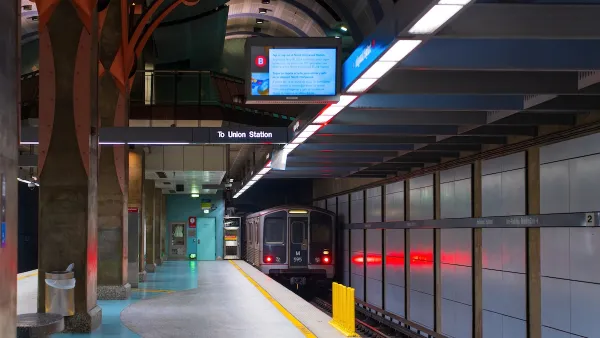The story of informal housing is one of changing racial and class demographics, economic opportunity and needs, and regulatory control.

Becky Nicolaides traces the history of informal housing in cities in suburban Los Angeles, starting in the 1920s with working-class whites through the 1980s when these areas shifted from white to Latino.
In the 1920s, working-class suburbs like Maywood, South Gate, and Bell Gardens gave poor whites an opportunity to become homeowners and gain economic stability in the era before social safety nets. Many of the homes were cheap and built through sweat equity. "This established not only their physical foundation, but also local traditions of self-building, informality, and the expectations that homeowners could do whatever they pleased to maximize their property’s economic potential," writes Nicolaides.
World War II brought a huge influx of workers to Southern California, but home construction had waned during the Depression. The state’s new residents faced severe housing shortages, and homebuilding to meet the new demand took off, along with more informal housing, says Nicolaides:
Another initiative was to encourage homeowners to convert rooms or garages to rent, a campaign that spread across L.A. County. Officials framed it as a patriotic gesture to help alleviate the housing crisis for homeless servicemen, along with defense workers and their families.
The economic downturn of the 1980s resulted in massive layoffs as factories and plants closed. Latinos began moving in as home prices dropped, but these areas still did not have sufficient affordable housing for the growth in population. "In the 1970s and 1980s, L.A.’s southern suburbs entered the third phase of informal housing: An extensive 'shadow market' of unpermitted rental units tucked away in suburban backyards and detached garages," notes Nicolaides.
These spaces ran the gamut from converted garages to home additions to bunkhouses in homes. Much of this housing was illegal and violated local building codes and regulations. While the informal housing filled a huge gap and benefited property owners and tenants, communities struggled with the density, the strain on infrastructure, and the drain on resources.
A backlash ensued, resulting in increased regulation and the placing of blame on immigrants. According to Nicolaides, "The spatial policing that ensued represented a local layer of the state’s apparatus that rendered undocumented Mexicans 'illegal' in the context of everyday life."
This informal housing is still present throughout Southern California, particularly in low-income Latino communities. "Once suburbanites and their elected leaders grasp the positive potential in informal housing—and the fact that it’s been around in L.A. a very long time—we may move a step closer toward solving our intractable affordable housing crisis," concludes Nicolaides.
FULL STORY: From Resourceful to Illegal

Maui's Vacation Rental Debate Turns Ugly
Verbal attacks, misinformation campaigns and fistfights plague a high-stakes debate to convert thousands of vacation rentals into long-term housing.

Planetizen Federal Action Tracker
A weekly monitor of how Trump’s orders and actions are impacting planners and planning in America.

In Urban Planning, AI Prompting Could be the New Design Thinking
Creativity has long been key to great urban design. What if we see AI as our new creative partner?

How Trump's HUD Budget Proposal Would Harm Homelessness Response
Experts say the change to the HUD budget would make it more difficult to identify people who are homeless and connect them with services, and to prevent homelessness.

The Vast Potential of the Right-of-Way
One writer argues that the space between two building faces is the most important element of the built environment.

Florida Seniors Face Rising Homelessness Risk
High housing costs are pushing more seniors, many of them on a fixed income, into homelessness.
Urban Design for Planners 1: Software Tools
This six-course series explores essential urban design concepts using open source software and equips planners with the tools they need to participate fully in the urban design process.
Planning for Universal Design
Learn the tools for implementing Universal Design in planning regulations.
Gallatin County Department of Planning & Community Development
Heyer Gruel & Associates PA
JM Goldson LLC
City of Camden Redevelopment Agency
City of Astoria
Transportation Research & Education Center (TREC) at Portland State University
Jefferson Parish Government
Camden Redevelopment Agency
City of Claremont





























